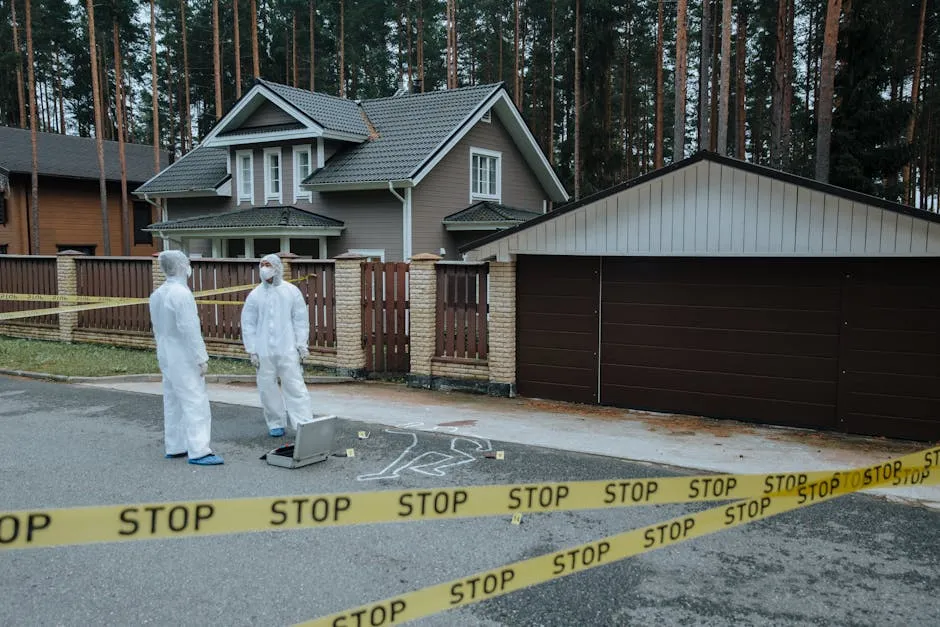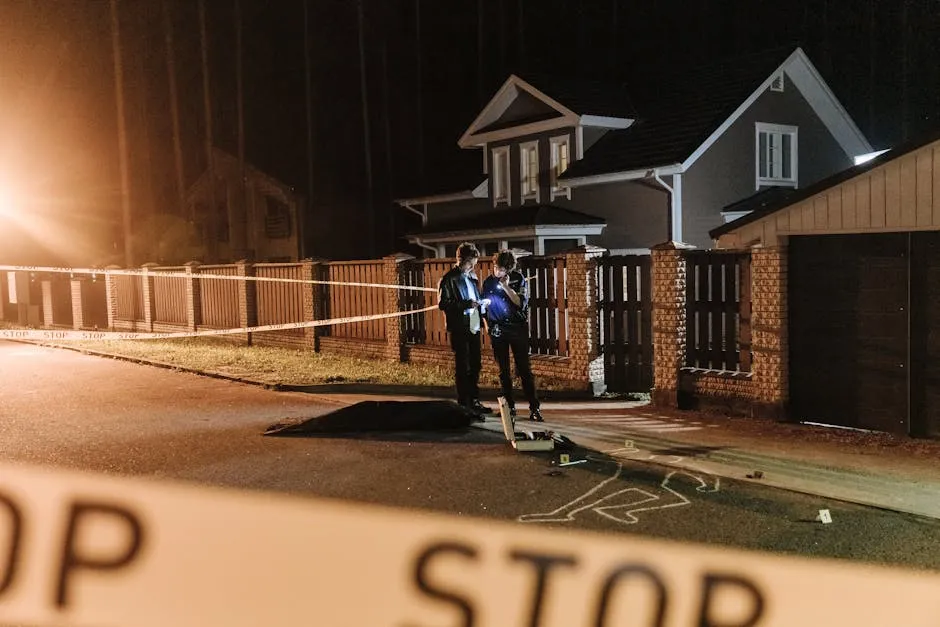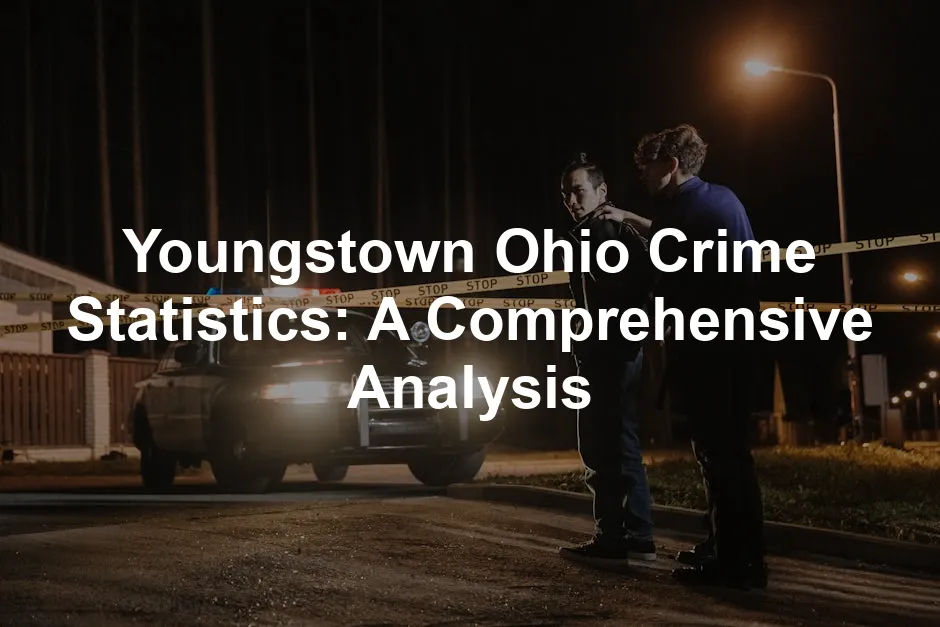Introduction
Youngstown, Ohio, isn’t just a dot on the map; it’s a city filled with stories, struggles, and a rich history. Nestled in the Mahoning Valley, it was once a booming steel town. But like many industrial hubs, it faced challenges over the years, including economic shifts. Today, Youngstown is known for its resilience, community spirit, and, yes, its crime statistics.
Understanding crime statistics is crucial for everyone. Residents want to feel safe in their homes. Potential movers often consider crime rates before deciding where to settle down. Moreover, policymakers rely on this data to develop effective crime reduction strategies.
In this article, we aim to provide a thorough analysis of crime statistics in Youngstown. We’ll compare these figures to national and state averages, offering insights into community safety. With a mix of humor and hard facts, let’s navigate through the numbers together.
Crime Rate Overview
The term “crime rate” refers to the number of crimes reported per 100,000 people. It’s a handy way to quantify safety and risk in a given area. In Youngstown, the crime rate is a hot topic, often sparking conversations at dinner tables.
As of 2022, Youngstown boasted a violent crime rate of 685.6 incidents per 100,000 people. That’s significantly higher than the national average, which hovers around 394.3. This statistic alone can send shivers down the spine of anyone considering a move to the area.
Trends over the past few years show a mixed bag of outcomes. While there has been a slight decline in certain violent crimes, property crimes have been more persistent. The overall crime incidents per 100,000 people in Youngstown stand at 2,132, making it clear that the city is facing challenges not seen in many other locales.
To help keep your home safe amidst these statistics, consider investing in a Home Security Camera System. This can provide peace of mind and an extra layer of protection for your family and belongings.

When we look at the data, Youngstown’s crime rate is higher than similar-sized cities. For instance, in comparison to Raleigh, NC, which has a violent crime rate of 506.6, Youngstown’s figures paint a stark picture.
The community is not blind to these numbers. Residents feel the impact daily. Some express concerns about personal safety, while others talk about the need for increased law enforcement presence. As we move forward, we’ll explore historical contexts to understand what has led Youngstown to its current crime landscape.
Historical Context
Youngstown’s crime rate hasn’t always been a talking point. From 2000 to 2022, the city has seen fluctuations influenced by various factors. Economic downturns play a significant role in crime rates. When factories closed, jobs vanished, and with them, community stability often crumbled.
A table showcasing crime rates from various years highlights these trends.
| Year | Violent Crime Rate | Property Crime Rate |
|---|---|---|
| 2000 | 1,158.6 | 6,384.6 |
| 2010 | 972.26 | 1,613 |
| 2015 | 733.66 | 1,490 |
| 2022 | 685.6 | 1,721 |
As you can see, the early 2000s were particularly tough. The numbers indicate a peak in violent crime, with rates significantly higher than the national average.
Potential reasons for these shifts include economic instability, changes in law enforcement, and community initiatives aimed at crime reduction.
In summary, while the crime rate in Youngstown remains a concern, understanding its historical context is vital. It’s not just about numbers; it’s about people, their stories, and their hopes for a safer future.

Violent Crime Statistics
Youngstown, Ohio, has faced its fair share of violent crime challenges. The city’s reputation for crime isn’t just a rumor; it’s backed by numbers. Let’s break down the types of violent crimes reported: murder, rape, robbery, and assault.
Murder: In 2022, Youngstown recorded 18 homicides, translating to a rate of 30 per 100,000 residents. This figure is alarmingly higher than the national average of 6.1. It’s safe to say that the community feels the weight of this statistic, as each number represents a life lost and a family affected.
Rape: Rape statistics in Youngstown reveal a rate of 36 per 100,000 residents, surpassing the national average of 40.7. While the community has initiatives to encourage reporting, the stigma surrounding such crimes often prevents victims from coming forward. Increased awareness and support systems are crucial for improvement.
Robbery: The robbery rate in Youngstown stands at 61 per 100,000 residents. This is lower than the national average of 135.5, which is somewhat reassuring. However, it still reflects a significant concern for residents worried about personal safety in their neighborhoods.
Assault: Assault remains the most prevalent violent crime in Youngstown, with a staggering rate of 296 per 100,000 residents. This figure is notably higher than the national average of 282.7. With each incident, the effects ripple through the community, contributing to the overall anxiety about safety.
When you compare these numbers to state and national averages, it’s evident that Youngstown struggles with violent crime. The violent crime rate for the city is 685.6 per 100,000, far above the national average of 394.3. This paints a clear picture of the challenges faced by residents and law enforcement in addressing these issues effectively.

Understanding crime statistics is essential for developing effective safety measures. You can find a comprehensive analysis of safety in Fremont, which can provide valuable insights into similar issues faced by Youngstown. fremont crime statistics
Yearly Trends in Violent Crime
Examining the trends in violent crime over the past decade reveals a complex tale. From 2012 to 2022, there have been fluctuations, but overall, the numbers reflect notable shifts.
In 2012, Youngstown faced a peak with 1,027 violent crimes per 100,000 residents. Fast forward to 2022, and the rate has decreased to 685.6. This decline represents a positive trend, showcasing the potential impact of community engagement and law enforcement efforts.
However, it’s essential to look at the factors that contribute to these changes. Economic conditions have played a significant role in influencing crime rates. Youngstown’s economic revival efforts aim to create job opportunities, reducing the desperation that often leads to crime.
Interestingly, while violent crime has seen a decrease, property crime has been on the rise. This divergence suggests that while violent offenses are being addressed, other factors such as unemployment and economic instability may still fuel property crimes.
Additionally, community perceptions of safety have changed alongside these statistics. A recent poll indicated that about 73% of residents feel unsafe due to the high crime rate. This perception can also affect how willing individuals are to report crimes or engage with local law enforcement.
In conclusion, while Youngstown has made strides in reducing violent crime, the journey is ongoing. The interplay of economic factors, community initiatives, and law enforcement strategies will continue to shape the landscape of crime in the city. Understanding these trends is vital for residents, policymakers, and law enforcement as they work towards a safer future.

Property Crime Statistics
Property crime is another significant aspect of Youngstown’s crime landscape, encompassing burglary, theft, and motor vehicle theft. Understanding the types and rates of these crimes is crucial for residents and potential movers alike.
Burglary: In Youngstown, the burglary rate stands at 447 per 100,000 residents, which is considerably higher than the national average of 500.1. This suggests that residents need to be vigilant about securing their homes. Investing in a Smart Lock for Front Door can provide an extra layer of security and peace of mind for your family.
Theft: Theft incidents are more frequent, with Youngstown reporting a theft rate of 1,004 per 100,000 residents. Nationally, this average is 1,292.9. While Youngstown’s rate is lower, it’s essential to recognize that theft can significantly impact a community’s sense of security.
Motor Vehicle Theft: The city has a motor vehicle theft rate of 270 per 100,000 residents, which surpasses the national average of 234.5. This statistic can make anyone think twice about leaving their car unattended, even for a brief moment.
When comparing these property crime rates to both state and national averages, it’s apparent that Youngstown faces challenges. The overall property crime rate in Youngstown is 1,721 per 100,000, higher than the national average of 1,783.

Understanding these statistics is vital for residents. Awareness can drive proactive measures, such as community watch programs and increased security for homes and vehicles. Don’t forget to keep a Fire Extinguisher handy, just in case of emergencies!
In summary, while Youngstown has made some progress in addressing violent crime, property crime remains a pressing concern. With economic factors and community engagement at play, residents must unite to promote safety and reduce crime in their neighborhoods.

Yearly Trends in Property Crime
When it comes to property crime in Youngstown, the past decade has showcased some concerning trends. The city has seen fluctuations, but overall, the property crime rate remains a significant worry for residents.
From 2012 to 2022, property crimes in Youngstown have notably shifted. In 2012, the rate was 1,613 incidents per 100,000 residents. Fast forward to 2022, and it has climbed to 1,721. This increase, although it may appear small, reflects a worrying trend in community safety.
Economic factors often play a pivotal role in these crime rates. The lingering effects of the area’s economic struggles can lead to desperation, pushing individuals toward crime. High unemployment and poverty rates contribute to a cycle that’s tough to break.
Indeed, this trend isn’t isolated. Many cities experiencing similar economic challenges face surges in property crime. Youngstown’s property crime rate is about 46.9% higher than the national average, according to recent statistics. Residents often express their frustrations, highlighting how theft and burglary impact their daily lives.
Safety perceptions are also shaped by these statistics. Many residents report feeling uneasy about leaving their homes unattended. This sentiment can lead to increased vigilance, with neighbors watching out for each other. Community policing and neighborhood watch initiatives have begun to flourish as a response to these concerns.
However, the increase in property crime has raised questions about law enforcement effectiveness. Polls indicate that while many residents acknowledge police visibility, they often feel that responses to crimes could be faster. This perception can erode trust in law enforcement and affect community morale.
The implications of rising property crime rates extend beyond statistics. They impact local businesses, property values, and overall community cohesion. When a neighborhood is viewed as unsafe, it can deter new residents and businesses from moving in. This, in turn, perpetuates the cycle of economic decline and crime.
In summary, while Youngstown has witnessed slight fluctuations in property crime rates over the last decade, the overall trend is troubling. Economic challenges, community perceptions, and law enforcement responses all intertwine to shape the city’s safety landscape. The ongoing dialogue about crime and community safety is essential for residents seeking to reclaim their neighborhoods.

Safety Assessments and Community Sentiment
In the heart of Youngstown, community sentiment regarding safety is a hot topic. Recent polls have shed light on how residents feel about their environment and the effectiveness of local law enforcement.
When asked how safe they feel, responses varied significantly. According to a survey of 23 residents, around 43% felt pretty safe but acknowledged some concerns. Meanwhile, 39% admitted to feeling somewhat safe, indicating noticeable safety worries. Alarmingly, 13% reported not feeling safe at all, while just 4% felt entirely secure.
These statistics paint a picture of a community grappling with mixed emotions about safety. It’s evident that while many residents enjoy their neighborhoods, underlying anxieties persist.
Moreover, perceptions of law enforcement effectiveness also play a critical role in community sentiment. In the same poll, 45% of respondents felt the police were “very visible and very responsive.” However, 41% believed that while the police were present, their response times could improve. Only 14% felt that law enforcement was infrequently present but quick to respond when called.
This divide in perception can create tension between residents and law enforcement, impacting trust levels. Community members want to feel safe, but they also desire quick and effective responses when issues arise.

Impact of Crime on Community
Crime affects everyday life in Youngstown, leaving a profound impact on residents. From family safety to local business viability, the ripple effects are felt throughout the community.
For many, the threat of crime looms large, influencing daily decisions. Parents may hesitate to let their children play outside, feeling the need to supervise closely. Adults might avoid certain areas or limit outings after dark. Such caution stems from a desire to protect loved ones, but it can lead to a sense of confinement and unease.
Additionally, crime rates can significantly affect local businesses. Stores may invest in security systems, impacting their bottom line. If a neighborhood is perceived as unsafe, potential customers may choose to shop elsewhere. This results in lower revenue for businesses already facing challenges in the current economy.
In response to these concerns, community initiatives have emerged. Neighborhood watch programs have gained traction, encouraging residents to band together and monitor their surroundings. These efforts foster a sense of unity and collective responsibility, promoting safety through vigilance.
Moreover, local organizations have started offering resources aimed at crime reduction. Workshops on home security and personal safety are becoming commonplace, empowering residents with knowledge and tools to protect themselves. Don’t forget to grab a First Aid Kit for emergencies at home!
Ultimately, while crime poses significant challenges in Youngstown, community resilience shines through. Through collective efforts and initiatives, residents are taking steps to reclaim their neighborhoods and foster a safer environment for all.

Comparison with Similar Cities
Youngstown’s crime statistics are a topic of concern, especially when stacked against similar-sized cities in Ohio and across the nation. By examining these figures, we can better appreciate the local challenges and identify trends worth noting.
Let’s first look at the raw numbers. In 2022, Youngstown reported a violent crime rate of 685.6 incidents per 100,000 residents. That may sound like a lot, but how does it compare to other cities? For instance, Raleigh, NC, has a significantly lower rate of 506.6. Miami, FL, is even more reassuring, with just 273.1. This stark contrast underscores the challenges Youngstown faces.
To paint a clearer picture, here’s a table that compares Youngstown’s crime statistics with a few similar cities:
| City | Violent Crime Rate (per 100,000) | Property Crime Rate (per 100,000) |
|---|---|---|
| Youngstown, OH | 685.6 | 1,721 |
| Raleigh, NC | 506.6 | 1,981 |
| Canton, OH | 1,198.0 | 5,292 |
| Akron, OH | 861.96 | 2,871 |
| Toledo, OH | 848.29 | 3,439 |
From the table, it’s evident that Youngstown’s violent crime rate is alarming. The city’s property crime rate of 1,721 is also a concern, especially compared to the national average, which hovers around 1,783.
What factors contribute to these discrepancies? A few elements come into play:
- Economic Conditions: Youngstown’s economy has faced significant challenges. High unemployment rates can correlate with increased crime, as individuals may resort to illegal activities out of desperation. In 2022, Youngstown’s unemployment rate was roughly 7.1%, well above the national average of 4.7.
- Community Policing Efforts: The number of police officers per capita also influences crime rates. Youngstown has about 2.94 officers per 1,000 residents, which is lower than the national average of 3.25. This disparity may affect response times and community engagement in policing efforts.
- Neighborhood Dynamics: Certain neighborhoods within Youngstown report higher crime rates. Areas like the East Side and Downtown often face more significant challenges compared to quieter outlying neighborhoods like Kirkmere. Understanding these local dynamics can help tailor community safety initiatives.
- Social Services and Support: Access to social services, mental health support, and community programs can significantly impact crime rates. Cities that invest in holistic community programs often see better results in crime reduction. Youngstown’s efforts in this area remain crucial for future improvements.
- Community Engagement: A strong sense of community can deter crime. Areas with active neighborhood watches or community policing partnerships often report lower crime rates. Youngstown has made strides in this regard, but more engagement is needed to create safer environments.
In conclusion, while Youngstown’s crime statistics are troubling, they also reflect broader economic and social issues. Understanding how Youngstown compares to similar cities highlights both the challenges and opportunities for improvement. With a blend of community engagement, economic development, and effective policing strategies, there is hope for a safer future.

Potential Solutions and Future Outlook
Addressing crime in Youngstown requires a multi-faceted approach. The city has a long road ahead, but several strategies could help pave the way for a safer environment.
First, enhancing community policing efforts is crucial. This involves building relationships between law enforcement and residents. When officers are seen as part of the community rather than outsiders, it fosters trust. Initiatives like neighborhood watch programs can encourage residents to collaborate with police, leading to quicker reporting of suspicious activities.
Investing in economic development programs is another key strategy. Creating job opportunities can reduce the desperation that often leads to crime. Programs designed to attract businesses, particularly in technology and manufacturing, could provide much-needed employment for residents.
Education also plays a vital role. Implementing programs that focus on youth engagement, mentorship, and education can provide young people with alternatives to crime. After-school programs that promote skills training and personal development can offer pathways to brighter futures.
Furthermore, tackling the root causes of crime through social services is essential. Increased funding for mental health services, addiction recovery programs, and community outreach initiatives can help individuals before they resort to criminal behavior. A holistic approach that addresses mental health, poverty, and education can create lasting change.
Community initiatives aimed at beautification and revitalization can also make a difference. When neighborhoods look appealing and well-maintained, residents feel more connected. This can deter criminal activities and promote a sense of pride.
As for the future outlook, there is reason to be cautiously optimistic. Recent trends show a slight decline in violent crime, with a decrease of 15.8% reported in 2022. If community and law enforcement continue to work together and implement effective strategies, it’s possible to see a sustained reduction in crime rates.
However, maintaining momentum is crucial. Ongoing evaluations of crime rates and community feedback will ensure that initiatives remain relevant and effective. Regularly assessing the effectiveness of programs and strategies will help Youngstown adapt and respond to changing dynamics.
In summary, Youngstown is at a crossroads. With the right mix of community engagement, economic development, effective policing, and social support systems, the city can move towards a safer, more vibrant future. Residents and local leaders must work together to foster change, ensuring that Youngstown is a place where safety and community thrive.

Conclusion
In summary, Youngstown, Ohio, exhibits a complex crime landscape. The violent crime rate stands at 685.6 per 100,000 residents, significantly higher than the national average of 394.3. Property crimes, too, are a concern, with a total crime rate of 2,132 incidents per 100,000 people. These statistics reveal that Youngstown faces challenges that require attention from both residents and local authorities.
Community engagement is vital in addressing these issues. Residents must stay informed, participate in neighborhood watch programs, and foster strong relationships with law enforcement. Awareness and communication can lead to a safer environment.
Local authorities should prioritize transparency and collaboration. By sharing crime trends with the community, they can build trust and encourage proactive measures. Law enforcement can also enhance their presence in neighborhoods, demonstrating a commitment to safety.
Furthermore, residents should advocate for community programs aimed at crime reduction. Initiatives that provide education, job training, and social support can positively impact crime rates. By addressing the root causes of crime, Youngstown can create a more secure and vibrant community.
In conclusion, while Youngstown’s crime statistics paint a concerning picture, there is a path forward. Collective efforts from residents and local authorities can foster a safer environment. With commitment and engagement, the community can work towards reducing crime and enhancing overall safety for everyone.

FAQs
What is the current violent crime rate in Youngstown?
As of 2022, the violent crime rate in Youngstown is 685.6 incidents per 100,000 residents. This figure is notably higher than the national average of 394.3, indicating significant safety concerns for residents.
How does Youngstown compare to other cities in Ohio?
When compared to other cities in Ohio, Youngstown’s violent crime rate is notably high. For instance, Raleigh, NC, has a rate of 506.6, while Akron reports 861.96. Youngstown stands out for its elevated crime rates, emphasizing the need for community-focused solutions.
What are common safety concerns for residents in Youngstown?
Residents commonly express concerns about violent crimes, such as assault and robbery. The fear of property crimes, including burglary and motor vehicle theft, also looms large. These concerns reflect the broader anxieties surrounding personal safety in the community.
Are there community programs in place to improve safety?
Yes, several community programs aim to improve safety in Youngstown. Initiatives like neighborhood watch groups promote vigilance and collaboration among residents. Additionally, local organizations offer resources focused on crime prevention, education, and youth engagement.
How can residents stay informed about local crime trends?
Residents can stay informed by accessing local news outlets, community bulletins, and online resources. Websites that track crime statistics, such as AreaVibes and City-Data, provide ongoing updates. Engaging with community meetings and discussions can also enhance awareness and promote safety initiatives.
Please let us know what you think about our content by leaving a comment down below!
Thank you for reading till here 🙂
All images from Pexels




